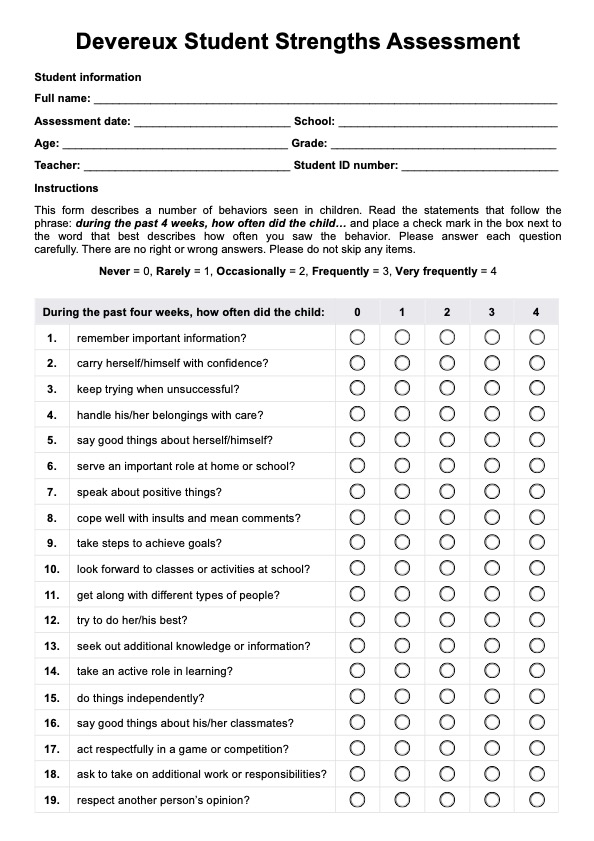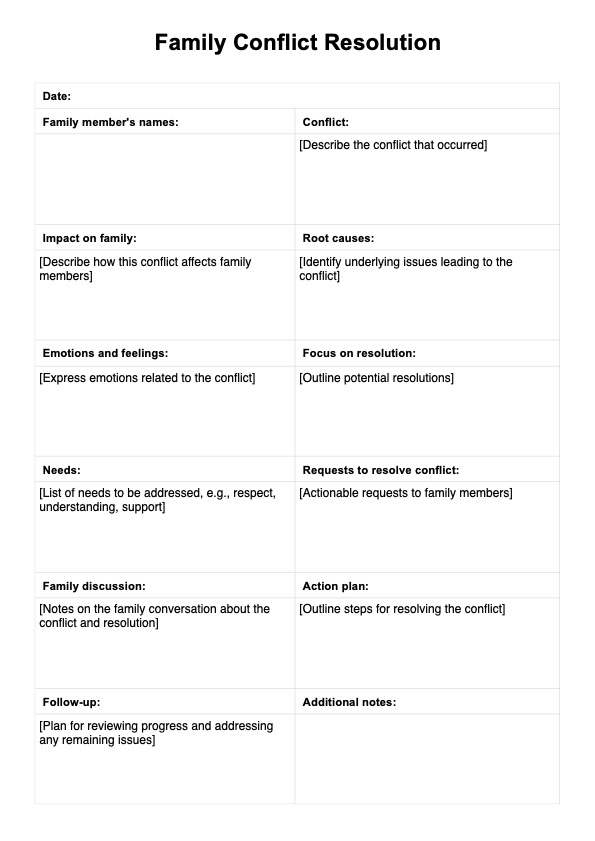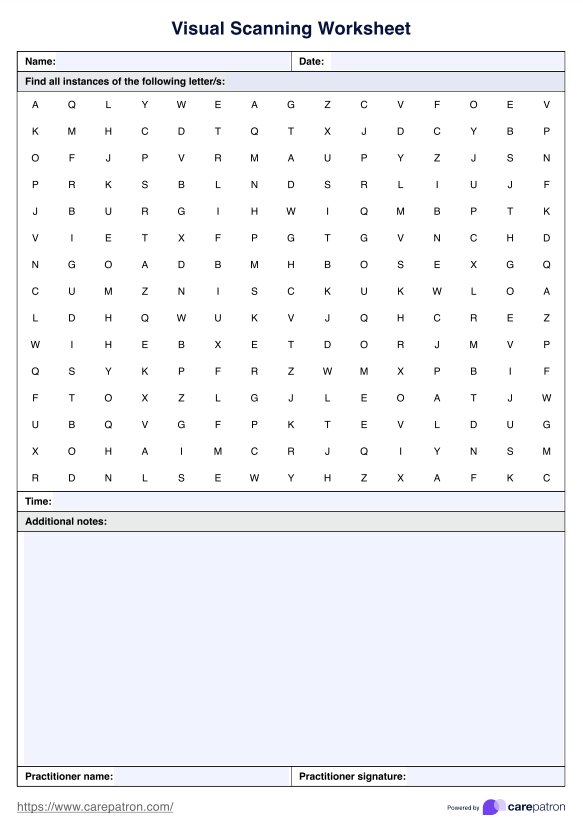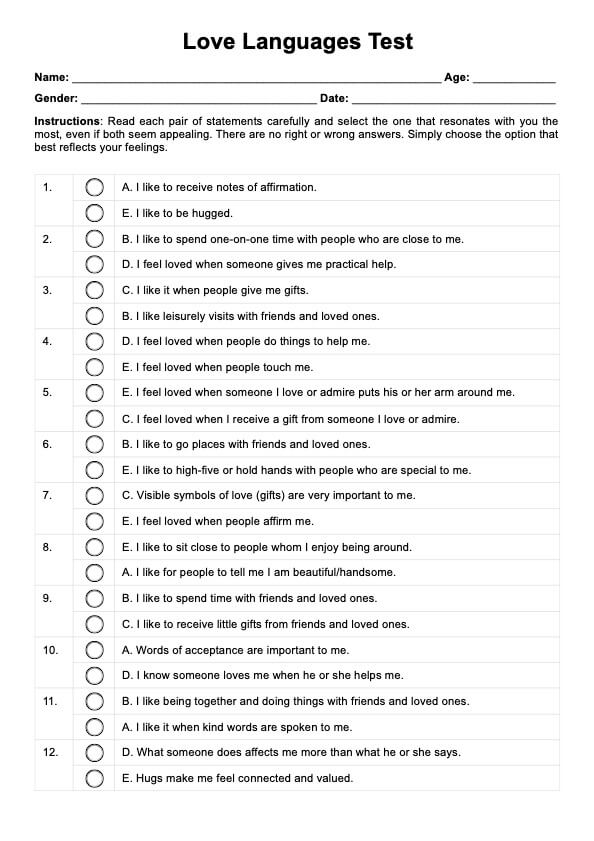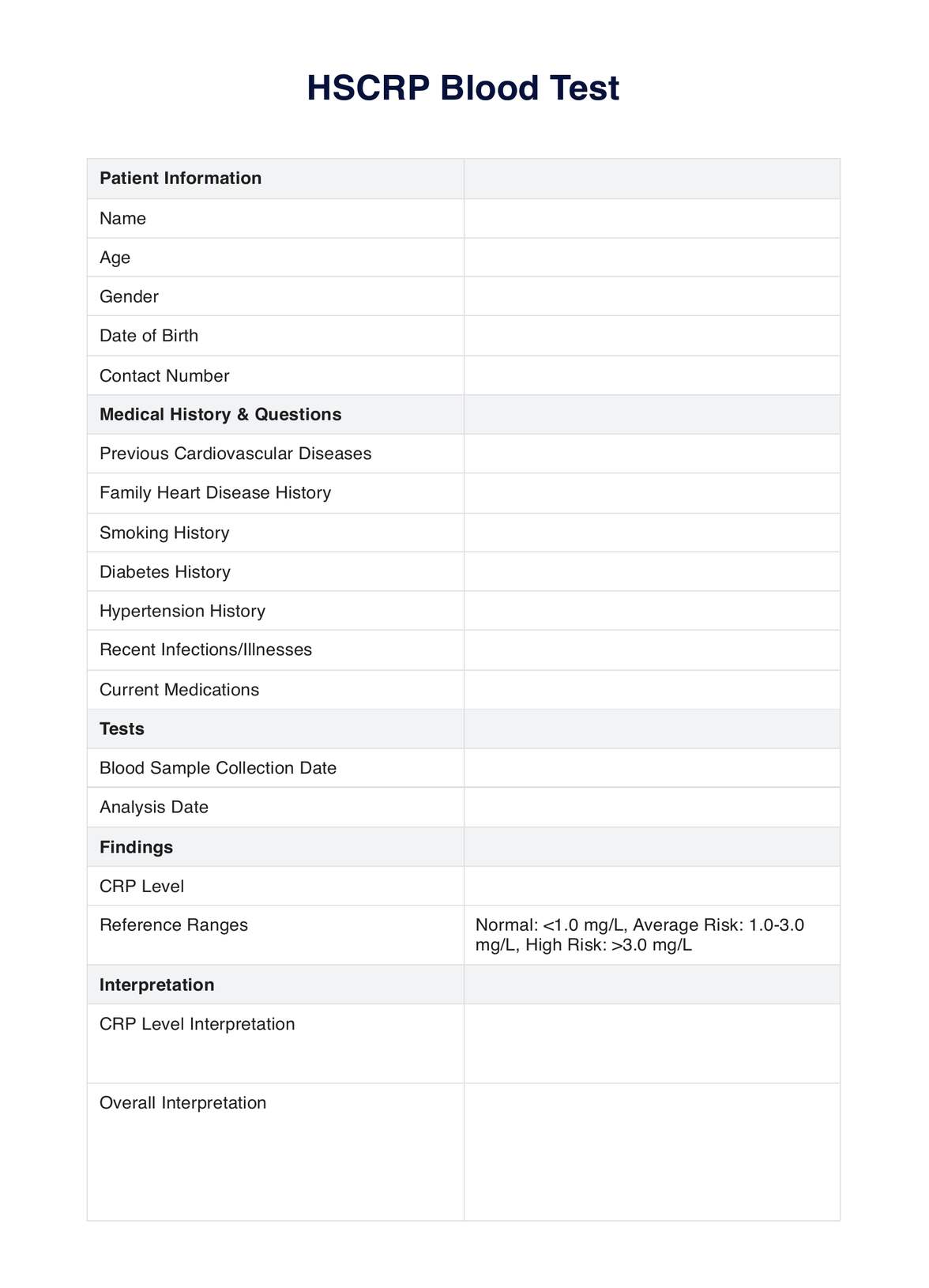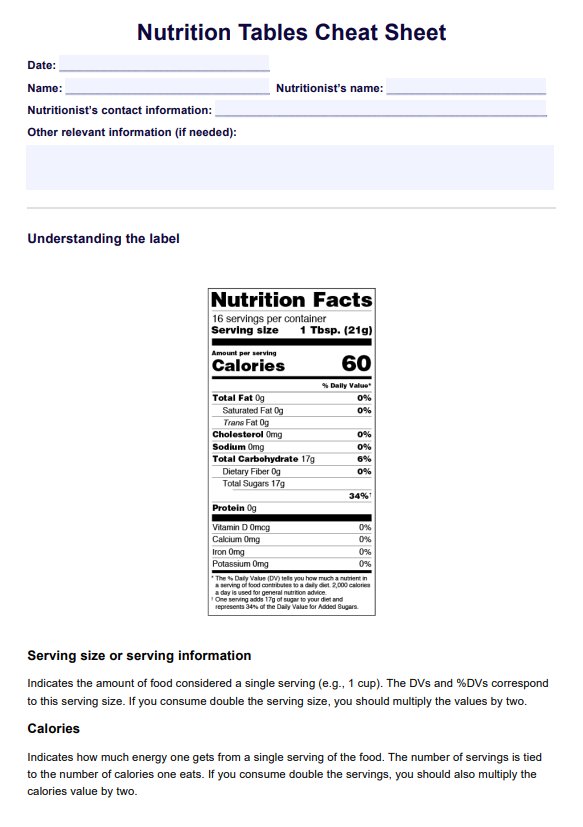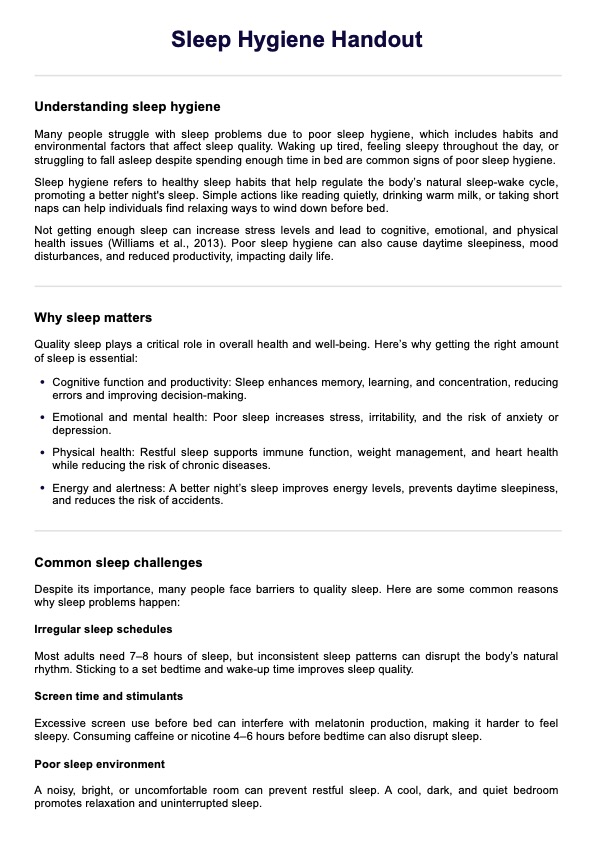PCL-R Checklist
The PCL-R Checklist Template is an essential tool for evaluating psychopathy and antisocial tendencies in psychology assessments.


What is a PCL-R Checklist?
The PCL-R Checklist, formally referred to as the Hare Psychopathy Checklist-Revised (PCL-R), is a meticulous and widely recognized diagnostic instrument essential for assessing psychopathic or antisocial tendencies in individuals.
This comprehensive checklist comprises a 20-item symptom rating scale, empowering qualified examiners to intricately evaluate an individual's degree of psychopathy by comparing it to the characteristics of a prototypical psychopath.
Initially crafted for assessing individuals accused or convicted of crimes, the PCL-R meticulously delineates key psychopathic traits, including a profound lack of conscience, empathy, and guilt, alongside egocentricity, pathological lying, repeated violations of social norms, disregard for legal boundaries, shallow emotional responses, and a documented history of victimizing others.
Recognized as a leading method in the field, the PCL-R plays a pivotal role in identifying and quantifying the presence and extent of psychopathy.
While the checklist was originally developed for adult males in prisons, criminal psychiatric hospitals, and various correctional facilities, contemporary applications suggest its effectiveness in diagnosing psychopathy across diverse populations. Recent experiences have demonstrated its utility in assessing sex offenders, as well as female and adolescent offenders, showcasing its adaptability and relevance in different forensic contexts.
The PCL-R, with its systematic approach, remains an indispensable tool for understanding and classifying psychopathy, contributing significantly to both clinical and forensic assessments.
PCL-R Checklist Template
PCL-R Checklist Example
How does it work?
The main steps involved in filling out a Printable PCL-R Checklist Template are:
- Preparation: before starting the assessment, gather essential information about the individual, including age, gender, legal history,and any relevant background information. Review the criteria for each item in the checklist to ensure accurate assessment.
- Interview: the interview should be conducted by a trained professional familiar with the PCL-R and skilled in interviewing techniques. Encourage the individual to elaborate on their experiences and responses to prompts. In addition to the interview, consider reviewing relevant reports, such as criminal records, employment history, or psychological evaluations.
- Scoring: based on the interview and gathered information, rate each item on a 3-point scale (0 = does not apply, 1 = applies somewhat, 2 = definitely applies). Sum the individual item scores to obtain a total score.
- Interpretation: higher scores indicate greater psychopathic traits.However, it's crucial to consider the individual's specific context and avoid making solely score-based diagnoses.
Analyze the individual's score across different categories within the checklist to understand their specific strengths and weaknesses. Based on the analysis, draw conclusions regarding the presence and severity of psychopathic traits.
Reporting: document the assessment process, interview findings, scoring, and interpretation of results. Clearly and concisely convey the assessment results to relevant professionals and individuals involved in the care or legal process.
When would you use this template?
Clinical settings
- Diagnosis: Assisting in the diagnosis of Antisocial Personality Disorder (ASPD) and psychopathy.
- Treatment planning: Informing treatment plans for individuals with psychopathic traits, focusing on specific areas of intervention.
- Risk assessment: Assessing the risk of violence or recidivism in criminal justice settings.
- Research: Studying the prevalence, characteristics, and correlates of psychopathy.
Forensic settings
- Pre-sentencing evaluations: Providing information to judges in sentencing decisions.
- Parole hearings: Assessing an individual's suitability for parole or release.
- Risk assessment during criminal investigations: Assisting law enforcement agencies in profiling potential suspects.
Other settings where this could be used include:
- Child custody evaluations: Informing decisions regarding child custody arrangements.
- Workplace assessments: Identifying potential employees with psychopathic traits who may pose risks to the organization.
- Research on personality disorders: Contributing to research understanding the development and characteristics of psychopathy.
What do the results mean?
Score Ranges and General Interpretations when using a Free PCL-R Checklist Template:
- 0-10: Individuals with scores within this range usually lack significant psychopathic traits.
- 11-20: Individuals with scores in this range may exhibit some psychopathic traits but not to a clinically significant degree.
- 21-30: This range indicates a moderate to high level of psychopathic traits, suggesting potential for significant negative impacts on life and relationships.
- 31-40: Scores in this range suggest a high degree of psychopathy, with strong potential for antisocial behavior, manipulation, and lack of empathy.
Specific Item Scores and interpretations
- Factor 1 (interpersonal/affective): Scores on items related to superficial charm, manipulativeness, and lack of empathy provide insight into an individual's ability to form meaningful relationships and their potential for emotional manipulation.
- Factor 2 (lifestyle/antisocial): Scores on items related to impulsivity, irresponsibility, and criminal behavior indicate an individual's potential for impulsive decision-making, engaging in risky or illegal activities, and disregarding social norms.
Important considerations
- Score alone is not conclusive: While score ranges offer a general interpretation, it's crucial to analyze individual item scores, interview data, and other relevant information to create a holistic picture.
- Context matters: The individual's background, social environment, and cultural context should be considered when interpreting the results.
Professional guidance required: A qualified professional trained in the PCL-R should interpret and explain the results, providing context and avoiding solely score-based conclusions.
Research & evidence
The use of the Hare Psychopathy Checklist-Revised (PCL-R) is paramount in forensic psychology assessments, providing a standardized method for evaluating traits associated with a psychopathic personality disorder. While past research has often relied on convenience samples, potentially introducing biases, a study by Storey et al., (2016) focuses on a systematically gathered sample of all male offenders admitted to a regional reception center in Canada.
The evaluation of psychometric properties, structural reliability, factor structure, and external correlates of PCL-R scores in this diverse and representative sample enhances the robustness of findings. This rigorous approach contributes to a more accurate understanding of psychopathy traits, minimizing potential biases in research interpretations and providing valuable insights for forensic assessments (Storey et al., 2016).
The significance of the Hare Psychopathy Checklist-Revised (PCL-R) in forensic assessments is underscored by its utility in identifying psychopathy traits among homicide offenders. Numerous studies highlight the overrepresentation of psychopathy in individuals convicted of homicide, emphasizing the need for a valid and reliable tool like the PCL-R.
This study focuses on retrospectively rating psychopathy in 35 homicide offenders during forensic psychiatric assessments, solely relying on forensic psychiatric files and court verdicts. The robust agreement between raters and a psychopathy prevalence of 31.4% underscores the effectiveness of the PCL-R in this specific Swedish sample.
Such findings emphasize the critical role of psychopathy assessment in planning treatment for homicide offenders, ensuring appropriate interventions for individuals prone to relapse into violent criminality.
The PCL-R's reliability in retrospective ratings further supports its suitability for research purposes, contributing valuable insights into the intersection of psychopathy and criminal behavior (Laurell & Dåderman, 2007).
References
Hare Psychopathy Checklist | Encyclopedia.com. (n.d.). Www.encyclopedia.com. https://www.encyclopedia.com/medicine/encyclopedias-almanacs-transcripts-and-maps/hare-psychopathy-checklist
Laurell, J., & Dåderman, A. M. (2007). Psychopathy (PCL-R) in a forensic psychiatric sample of homicide offenders: Some reliability issues. International Journal of Law and Psychiatry, 30(2), 127–135. https://doi.org/10.1016/j.ijlp.2004.08.011
Storey, J. E., Hart, S. D., Cooke, D. J., & Michie, C. (2016). Psychometric properties of the Hare Psychopathy Checklist-Revised (PCL-R) in a representative sample of Canadian federal offenders. Law and Human Behavior, 40(2), 136–146. https://doi.org/10.1037/lhb0000174
Commonly asked questions
Carepatron has a ready-to-download and use PCL-R Checklist for your convenience.
PCL-R Checklists are used when assessing psychopathic traits in individuals, commonly in clinical, forensic, and research settings.
Trained professionals use PCL-R Checklists to interview individuals and rate their responses, assigning scores that indicate the presence and severity of psychopathic traits.


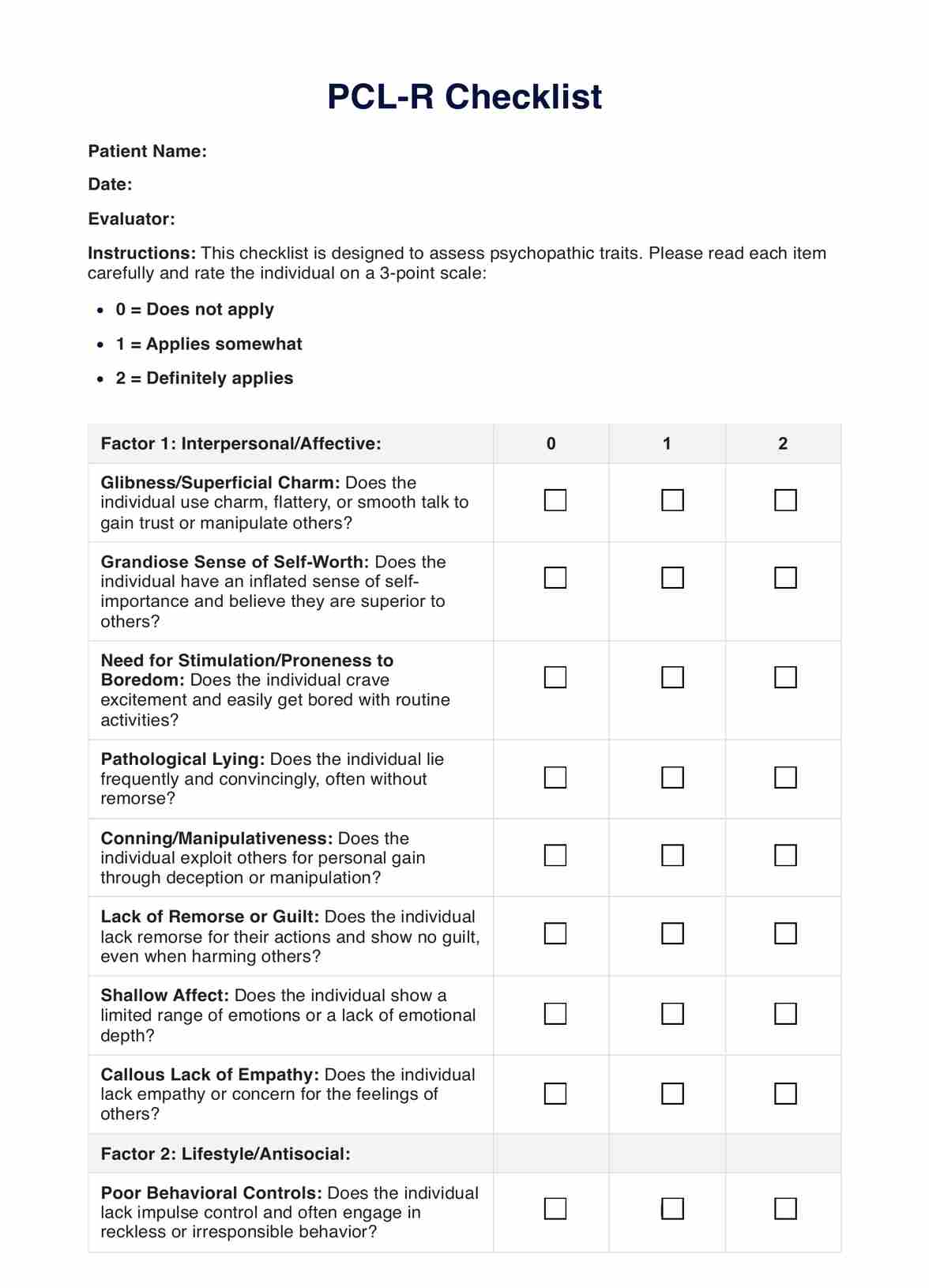
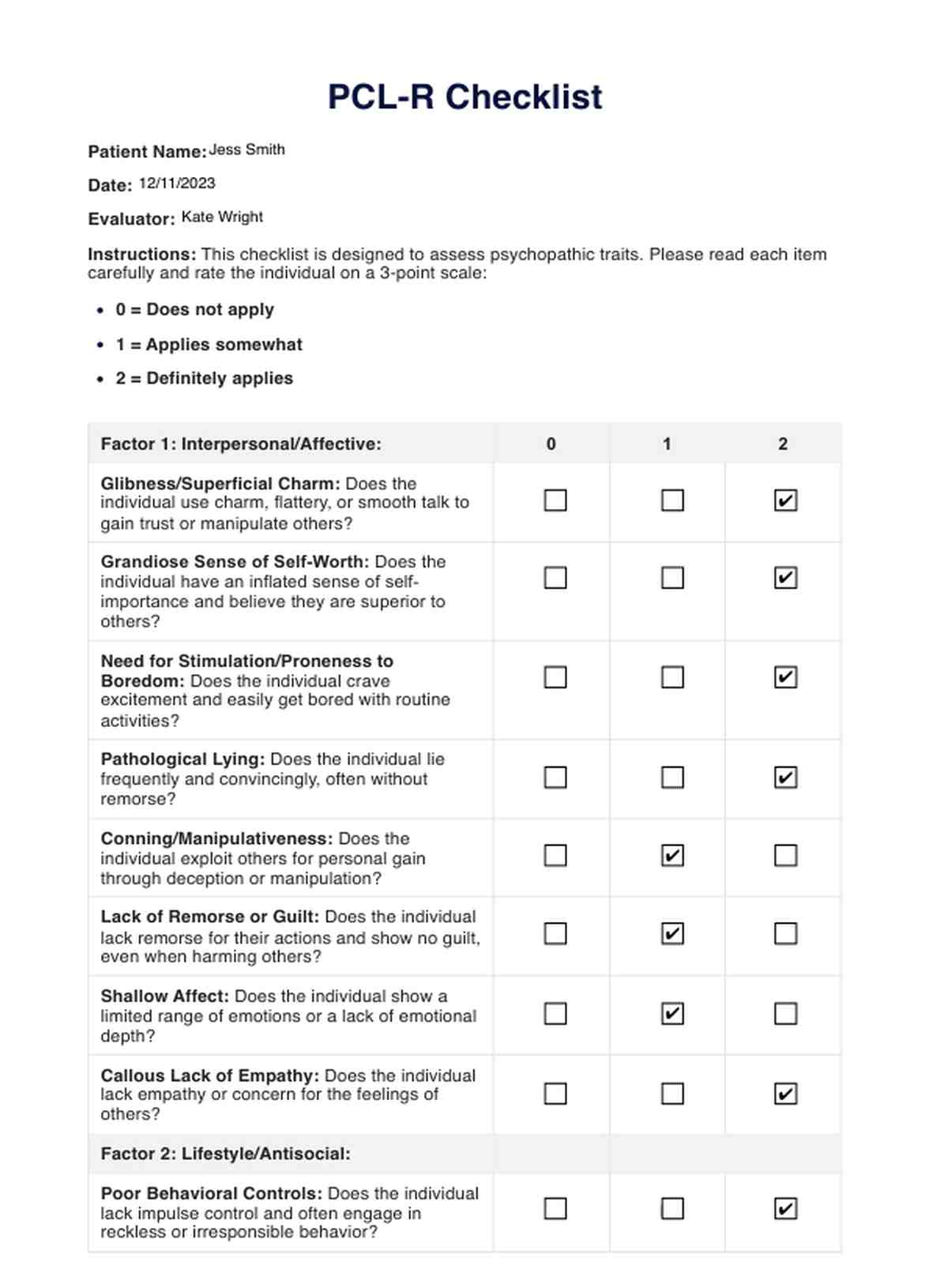

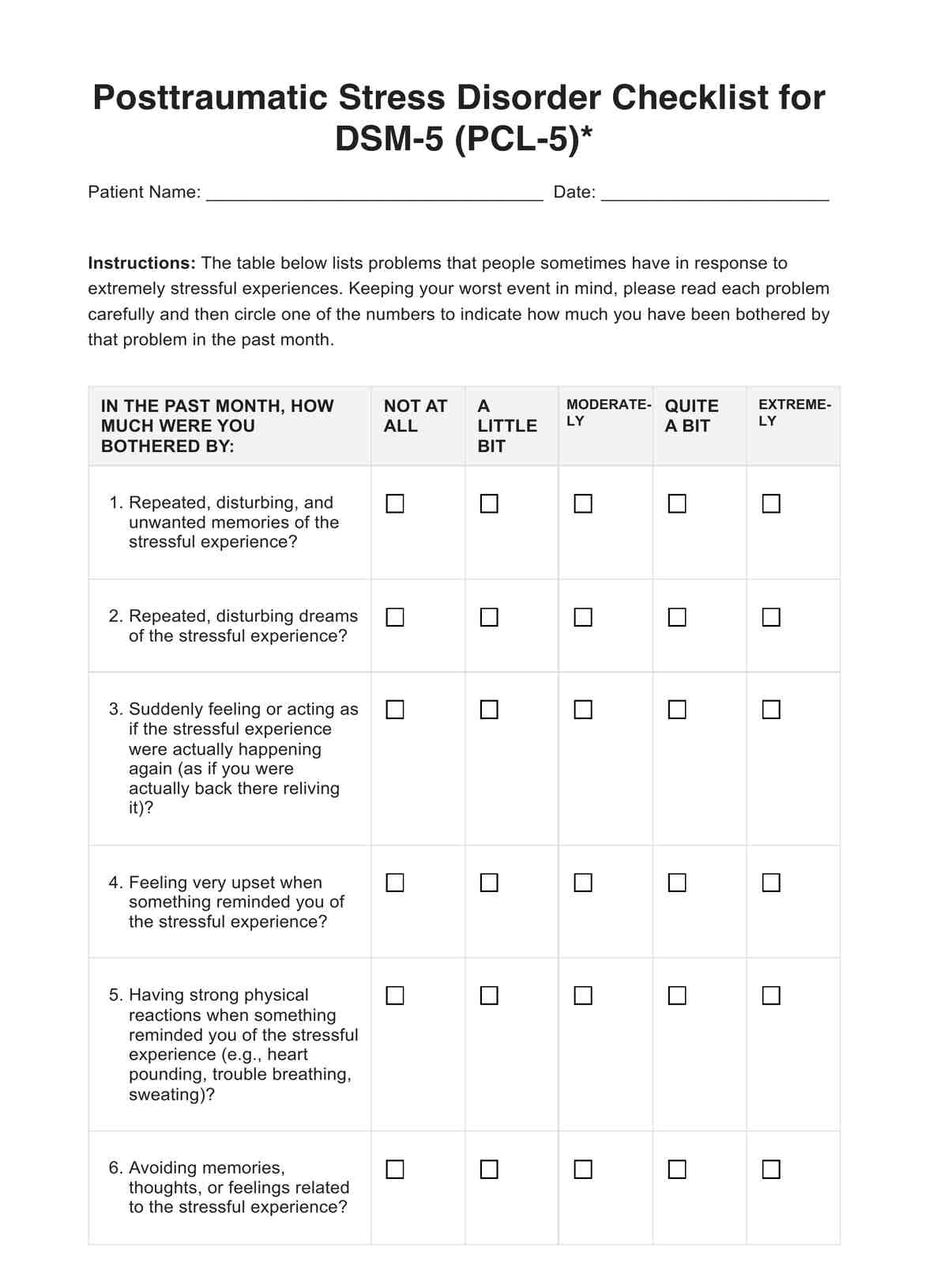
















-template.jpg)

























